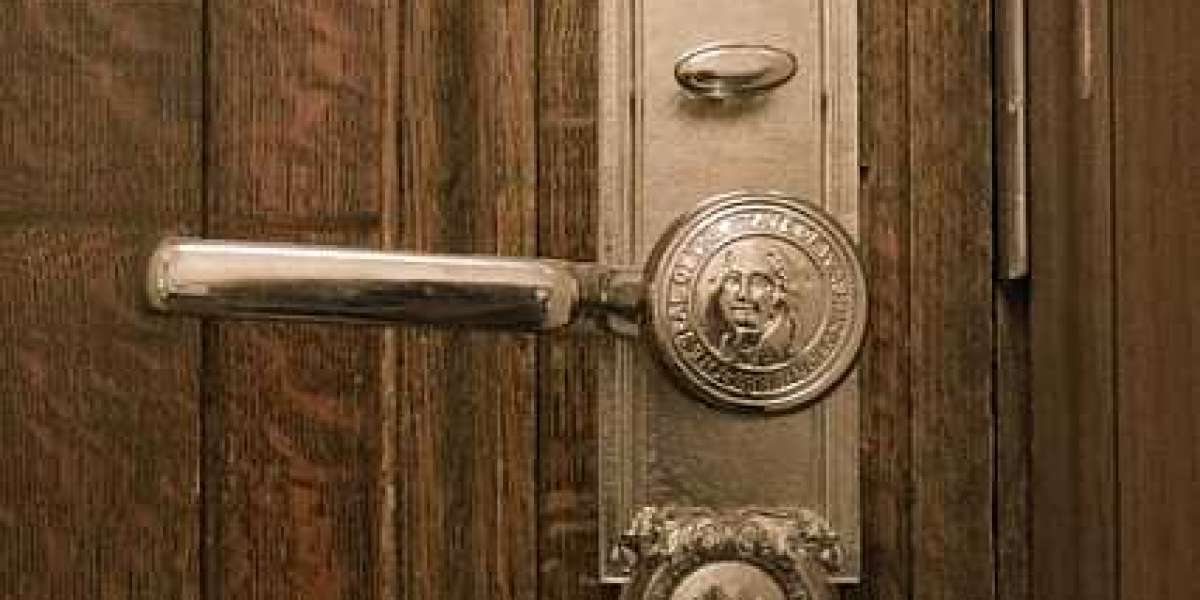When you walk into a home, one of the first things you interact with is a door. And while doors come in various styles and materials, one constant feature that we rely on every day is the humble door handles or door knob. Though often overlooked, these small yet essential elements of architecture have evolved significantly over time. From the ancient days of basic wooden latches to today's sophisticated, smart entry systems, door handles and door knobs have not only adapted to changing tastes and technologies but have also played a significant role in shaping the way we engage with our homes and workplaces.
In this blog, we’ll take a journey through the history of door handles and door knobs, examining their origins, developments, and the impact they’ve had on architectural design and daily life.
The Origins: Early Door Hardware
The history of door handles and door knobs can be traced back to the very beginning of civilization. In ancient Egypt, wooden doors were often secured with a simple latch or bolt, sometimes operated from the inside or with a cord. However, it was the Romans who began experimenting with more advanced forms of door hardware. The first true door handles were simple metal fixtures that allowed for easier opening and closing of doors. These early handles were usually made of bronze, iron, or other durable metals, and were often just bars or knobs that could be gripped by hand.
The key feature of these early door knobs was their functionality, as there was little attention paid to aesthetics or design. At this stage, they were purely practical, serving as mechanisms for opening doors or securing them shut.
Medieval Times: Functional Yet Decorative
During the Medieval period, door handles and door knobs began to evolve in both functionality and design. As castles, churches, and homes became more elaborate, doors were no longer just simple planks of wood—they became monumental features in architecture. With this shift, the importance of decorative door handles and door knobs grew as well.
Iron became the preferred material for door knobs, as it was both sturdy and relatively easy to work with. The use of ornate, hammered iron door handles was common, and many of them were designed with intricate designs that reflected the status of the homeowner. Large, heavy door handles were often employed on the doors of grand estates and churches, where they served as both functional hardware and symbolic representations of wealth and power.
By the end of the medieval period, door knobs were often shaped like rings or elaborate disks, often adorned with fleur-de-lis patterns or animal motifs. These designs became symbols of prestige, showcasing the growing artistic craftsmanship in metalworking.
The Renaissance and Baroque Periods: Luxury and Refinement
The Renaissance period marked a significant leap in the evolution of door handles and door knobs. During this time, the focus shifted towards creating more elegant and refined architectural elements. Door handles and door knobs were often made from luxurious materials such as brass, bronze, and even gold. Ornate carvings and intricate detailing became a hallmark of the era, reflecting the Renaissance ideals of beauty, art, and sophistication.
In the Baroque period that followed, door handles and door knobs became even more elaborate, with the addition of embellishments such as scrolls, foliage patterns, and decorative motifs. These handles often featured curved, flowing designs, and some even incorporated gemstones and other precious materials. The door knobs during this time were not just functional but were also pieces of art meant to impress.
These ornate door handles weren’t just seen in palaces or grand estates. As middle-class homes started to rise in affluence, decorative door knobs became a common feature in more modest homes, reflecting the influence of Baroque and Renaissance art on daily life.
The Industrial Revolution: Mass Production and Standardization
The Industrial Revolution in the 19th century had a profound effect on the design and production of door handles and door knobs. The mass production of materials and tools allowed manufacturers to create door handles on a much larger scale, making them more affordable and accessible to the general public. No longer were decorative door knobs reserved for the wealthy; they were now found in homes of all classes.
This period also saw the introduction of new materials, such as cast iron and steel, which allowed for stronger, more durable door handles and door knobs. As the demand for more practical and functional hardware grew, manufacturers started to standardize the sizes and designs of door handles and door knobs, making them easier to install and more widely available.
The Victorian era, in particular, saw a surge in decorative door knobs, often made from glass, porcelain, and ceramic. These materials allowed for unique colors and patterns, making door handles and door knobs a statement of style. It was during this time that the concept of matching door handles to the overall aesthetic of a room became popular.
The 20th Century: Modernism and Innovation
The early 20th century saw the emergence of modernist design principles, which favored simplicity, clean lines, and functionality. As a result, door handles and door knobs became more minimalist in design, shedding the excessive ornamentation of the past. Chrome, stainless steel, and aluminum began to replace brass and bronze, reflecting the sleek and industrial nature of the times.
In the mid-20th century, the rise of contemporary design meant that door handles and door knobs were no longer just about functionality—they became a part of the overall design language of the home. Simple, streamlined handles were integrated into doors and cabinetry, often taking on geometric or cylindrical shapes. At the same time, innovations like push-button door handles and spring-loaded door mechanisms began to emerge, adding convenience and modernity to the design of doors.
Today: Smart and High-Tech Door Handles
In the 21st century, door handles and door knobs have undergone another transformation, driven by advancements in technology and changes in consumer preferences. One of the most significant innovations in recent years is the rise of smart locks and keyless entry systems. Today’s door handles no longer just serve as a tool for opening and closing doors—they can also control access to homes and buildings with fingerprint recognition, Bluetooth, and keyless entry pads.
Beyond the functionality of smart systems, modern door handles and door knobs also reflect the diverse tastes and preferences of homeowners. From sleek, minimalist designs to more traditional styles, the variety of options available today ensures that there is a door handle or door knob to suit every taste and style. Materials such as matte black, brushed nickel, and even eco-friendly options like bamboo are widely used to create stylish and sustainable designs.
Conclusion: A Timeless Function, Evolving Form
The evolution of door handles and door knobs is a testament to how something as simple as a door hardware can adapt to the changing needs, tastes, and technologies of society. From the earliest days of bronze latches to today’s smart entry systems, door handles and door knobs have been shaped by both functionality and style. As we look forward to the future, it’s clear that these small but important features will continue to evolve, incorporating new materials, technologies, and designs while maintaining their essential role in our everyday lives.
So, the next time you open a door, take a moment to appreciate the fascinating history of the door handle or door knob that makes it possible.

